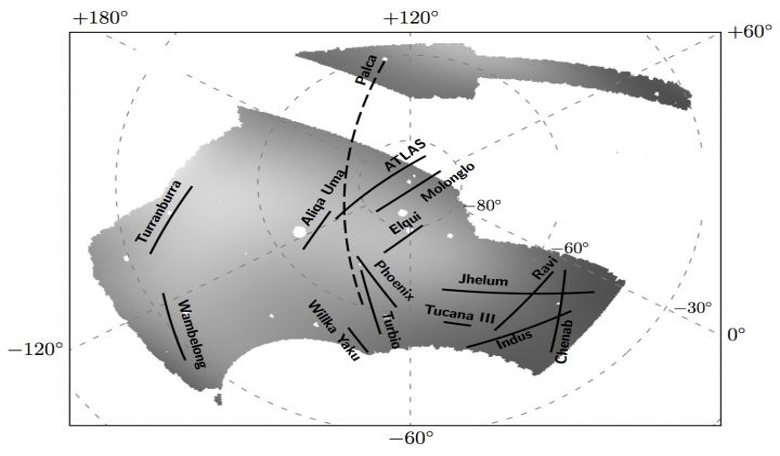This week scientists on the Dark Energy Survey (DES) announced the public release of their first three years of data and contained within it, is tell-tale evidence that not all of the stars in our Milky Way were born here.
This first major release of data from the Survey includes information on about 400 million astronomical objects, including distant galaxies billions of light-years away as well as numerous dwarf galaxy neighbours of the Milky Way.
When one of these small neighbouring galaxies ventures too close to our galaxy, it is possible for the gravitational pull of the Milky Way to draw out tendrils of stars from the near-by galaxy, which trail behind it in a stream.
Seeing evidence of stars being torn away from their host galaxy and assimilated into their new, bigger home is incredibly difficult to do, however as the DES data covers 1/8 of the entire sky and extends to stars 40 million times fainter than the human eye can see, the data has revealed the presence of eleven new stellar streams.
"These discoveries are possible because the Dark Energy Survey is the widest, deepest, and best-calibrated survey out there," explained Alex Drlica-Wagner (Fermilab), a member of the DES team.
Four of the streams found by DES – ATLAS, Molonglo, Phoenix and Tucana III – were already previously known to researchers. The others were discovered using the Dark Energy Camera, the primary observation tool of the Dark Energy Survey and one of the most powerful astronomical cameras on Earth.
The camera was built and tested at Fermilab and is mounted on the National Science Foundation's 4-meter Blanco telescope, part of the Cerro Tololo Inter-American Observatory in Chile, a division of NOAO.
Although DES was carried out primarily to understand the nature of dark energy, as the data covers the full DES footprint – about 5,000 square degrees – the hundreds of terabytes of data that have just been released along with catalogs of hundreds of millions of galaxies and stars, opens a door to many other studies, like the new stellar streams.
"There are all kinds of discoveries waiting to be found in the data. While DES scientists are focused on using it to learn about dark energy, we wanted to enable astronomers to explore these images in new ways, to improve our understanding of the universe," said Dark Energy Survey Data Management Project Scientist Brian Yanny of the U.S. Department of Energy's Fermi National Accelerator Laboratory.
"With the DES data now available as a 'digital sky,' accessible to all, my hope is that these data will lead to the crowdsourcing of new and unexpected discoveries,” added Adam Bolton, associate director for the Community Science and Data Center at the National Optical Astronomy Observatory (NOAO).











